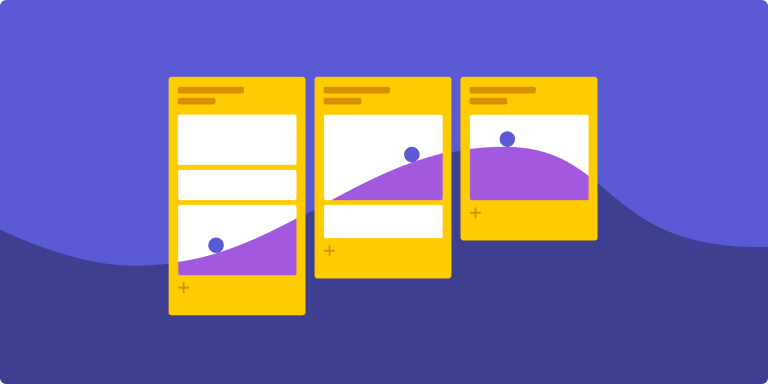You've invested time and energy in a complex project, coordinating several teams, and you're on the verge of achieving your objectives. However, the customer suddenly tells you that he wants to go in a different direction. If this situation sounds familiar, Agile project management methodology can give you the flexibility you need to adapt quickly and pivot without wasting precious resources.
But how do you know if this approach is right for your project? Our guide explores the foundations of the Agile method, highlighting its best applications, while providing practical advice on how to start planning your Agile project with monday.com.
What is agile project management?
Agile project management methodology adopts a progressive, iterative approach throughout the project lifecycle. This iterative approach, widely used in software development, offers greater speed and adaptability. Agile teams work simultaneously on different phases of the project, known as Agile iterations or sprints. This approach enables continuous problem-solving and revision based on results, customer feedback and real-time data.
What are the differences between agile and waterfall methodologies?
On the one hand, the agile method embodies a revolutionary philosophy, diametrically opposed to traditional schemes such as the waterfall approach. Let's take a look at the defining characteristics of this innovative approach:
- Iterative approachWork is broken down into sprints or cycles, encouraging incremental development and adaptability along the way.
- Collaboration and communicationCommunication and collaboration are at the heart of the process, ensuring a smooth flow of information between all project stakeholders.
- FlexibilityFlexibility is the name of the game, enabling rapid adjustments to be made in response to feedback and market developments.
- Fast delivery of functional softwareThe emphasis is on fast delivery of functional products, ensuring maximum responsiveness to customer needs.
- Adaptability of specifications: Project specifications can be adjusted throughout the project lifecycle, offering unparalleled agility to meet changing requirements.
On the other hand, the waterfall method is characterized by a linear and structured approach, but without a lack of relevance. Here's what sets it apart:
- Linear approach: The work is divided into distinct phases, with each stage having to be completed before moving on to the next, thus ensuring a methodical progression.
- Planning and documentation: Meticulous planning and exhaustive documentation are at the heart of this approach, guaranteeing total traceability of activities.
- Compliance with a predefined processStrict adherence to a predefined process ensures consistency and predictability in project implementation.
- Delivery of a fully completed project: Priority is given to delivering a finished product that complies with the initial specifications, thus minimizing the risk of changes along the way.
- Requirements defined at the start of the projectAll requirements are supposed to be defined at the outset of the project, providing a clear and stable vision of the end result.
- Limited customer involvementCustomer participation is often limited to the initial and final phases of the project, with less involvement during development.
An example of agile project management
Let's take the development of a new website as an example of an Agile approach to project management. During a single iteration or sprint, your team must :
- Gathering needs
- Drawing up specifications for the website
- Site design and development
- Performing tests
- Make ongoing adjustments
At each iteration, you evaluate progress and adapt the plan if necessary (for example, by adding or removing features, modifying the design, etc.). Once the sprint is complete, you move on to the next one. This process is repeated until the project is ready for launch.
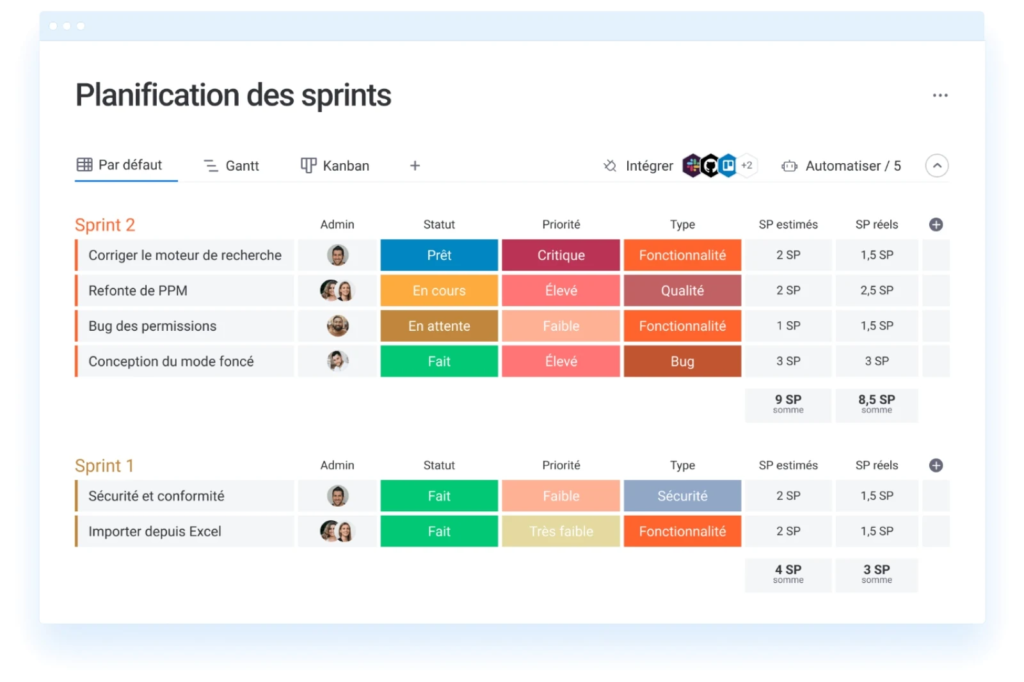
What are the 4 key values of Agile project management?
In Agile project management, four core values play a crucial role in every decision made:
- Prioritizing people and interactions processes and tools.
- Opt for functional software rather than exhaustive documentation.
- Encouraging collaboration with customers rather than focusing on negotiating a contract.
- Focus on adaptability in the face of change rather than sticking to a pre-established plan.
The fundamentals of agile project management
The Agile Manifesto lists the 12 guiding principles of Agile project management:
- Meet customer needs: focus on the needs of your target market.
- Don't be afraid of change: even a late change in development can give your product or service a competitive edge.
- Deliver functional versions frequently: small and often is the rule, so stay focused on completing iterations rather than finished products.
- Bring together trade and technical people: any gap between departments leads to a misalignment between your products and your target audience.
- Motivate, trust and support your team members: provide a supportive environment for your team to excel.
- Start a face-to-face conversation: regular feedback is at the heart of Agile.
- Measure progress with functional versions of the final product: correct course if necessary.
- Encourage sustainable development: long-term, continuous progress wins out over hackathons.
- Pay particular attention to technical excellence: good design improves agility.
- Be concise: Focus on creating an MVP (minimum viable product). Don't waste time building a huge, feature-rich product if your customer just needs the basic version.
- Use self-organizing teams: autonomy leads to more motivated and productive employees.
- Reflect and review regularly: you can't learn or progress without evaluating your workflow.
Which projects are best suited to Agile project management?
The Agile method for project management enables increased performance monitoring through regular Scrum meetings and sprint reviews. Although it emerged in the context of software development, Agile can be successfully applied to a variety of projects, whatever their field. Today, every company has a system for tracking progress and completing tasks, even if these are not aimed at producing a physical product.
Agile project management shortens the work cycle, enabling you to get to market faster while constantly adjusting course to align with market changes.
Agile project management is mainly used when :
- Project requirements are unpredictable and can change frequently.
- Projects are complex and require frequent iterations.
- Frequent feedback to stakeholders and customers is essential.
- Projects present a high degree of risk or uncertainty.
- Projects focus on value creation.
Companies such as ING, Gore and Spotify are already using Agile project management to manage several interconnected tasks. Why not join them by subscribing to a free trial of monday to plan your next Agile project?
What are the advantages of Agile project management?
Agile project management is the ideal framework for your project if you are looking for :
- Increased customer satisfaction - Customer satisfaction is the ultimate goal of all project management. Not only do they want to benefit from outstanding communication, they also want to be fully satisfied with the final product.
- Dynamic change - Once a stage of a linear project has been completed, there's no room for change when you hand over to the next team to manage their tasks. Not so in Agile project management, where change is quickly adopted.
- Efficient use of resources - Seizing the need to change a project at the right time can save a lot of time and money, as the team can quickly make adjustments without starting from scratch.
- Closer collaboration - Agile creates plenty of space for interdepartmental collaboration, as well as between team members. The nature of the methodology encourages conversations and checks that foster creativity and innovation.
- Fast time to market - The agile approach enables you to get the concept into the hands of your users quickly. With each iteration, the agile project generates tangible value. At any time, you can decide to release what has been delivered to start building your user base or testing your hypothesis.
6 Agile project management methodologies
Visit State of Agile 2022 report highlights that Scrum is the "most dominant framework" in Agile, with 87% of respondents using it. However, it's not the only option. Find out how Scrum compares to five other Agile project management methodologies.
1. Scrum project management
Scrum is a revolutionary Agile framework for managing product development and other knowledge work. It's an experimental approach that allows teams to create a hypothesis about how they think something works, test it, learn from it and adjust accordingly.
Large project teams are divided into smaller, autonomous Scrum teams, with a Product Owner who represents the company's interests, and a Scrum Master who works to minimize obstacles to progress. These teams work in Scrum sprints, generally lasting from one to four weeks.
Instead of writing a detailed project planThe Scrum team reviews the product "specifications" before each sprint. The specification is the list of features required by the finished product. After each sprint, a meeting is organized to improve the overall project strategy, in an iterative and flexible approach.
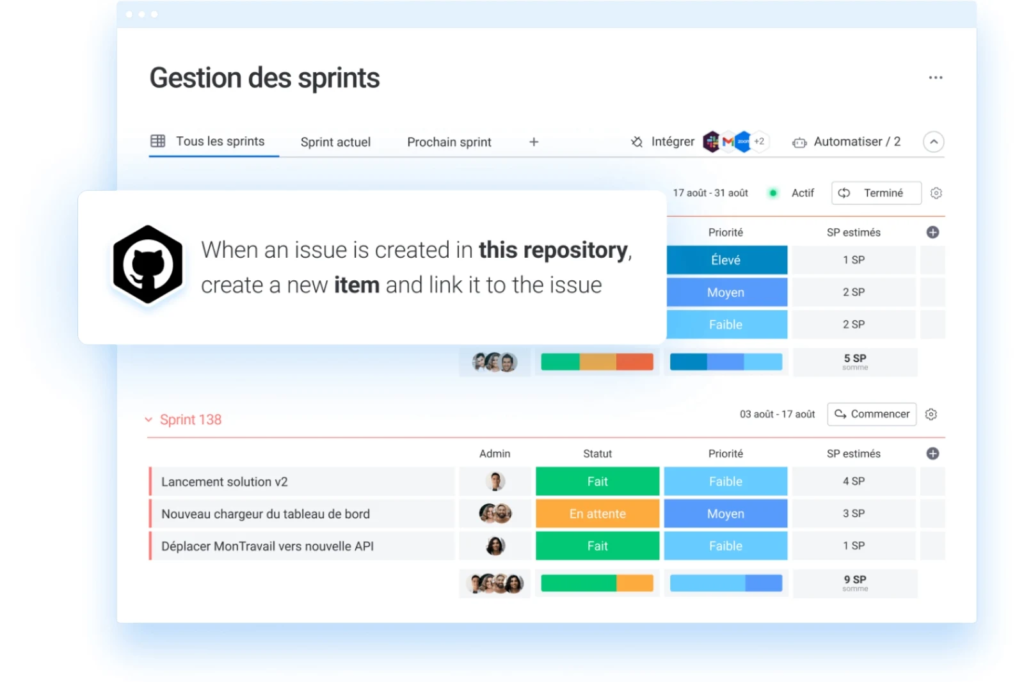
2. Kanban project management
The Kanban method stands out for its real-time communication on everyone's capabilities and its total transparency of the project. Work items are visually represented on cards, enabling the team to monitor progress at all times. Rather than working in sprints, teams collaborate to continuously improve the product. They create a Kanban board that defines a logical workflow for solving problems or adding features to software under development.
This workflow-centered approach promotes agility, productivity and consistent delivery of value. Kanban revolutionizes software development project management by placing collaboration and continuous improvement at the heart of the process. Thanks to this method, companies can gain in transparency and efficiency, while remaining agile in the face of market challenges.

3. Extreme Programming
Extreme Programming is an agile approach to software development that focuses on customer satisfaction, technical excellence and teamwork. Its core practices, such as test-driven development, simple design, refactoring and pair programming, aim to build the right product quickly.This method is particularly popular for software development projects, as it focuses on delivering value iteratively. Thanks to regular checkpoints, the team can adjust course if necessary, ensuring that the product meets the customer's needs.
4. Feature-based development
Feature-driven development (FDD) is an agile method particularly suited to large-scale software projects. In this type of project, customers are not always sure of their requirements until they can actually experience them. FDD starts with an overall design that lays the foundations for the project, before teams work in short cycles to deliver small chunks of functionality.
5. Lean project management
Lean project management focuses on reducing resource waste, optimizing collaboration between teams and working towards the same goal. This method is often used in highly regulated industries where compression and speed of delivery are essential.Key Lean project management practices include continuous integration, small batch sizes, customer feedback loops and working in multi-disciplinary teams. This approach optimizes processes, streamlines collaboration and ensures that all efforts are focused on the same goal.
6. Adaptive software development
Adaptive Software Development works best in a constantly changing environment. The development cycle is continuous and involves gathering customer feedback, analyzing the results, modifying the product or process, testing the new approach, and repeating the process. Central practices in adaptive software development include risk management, customer feedback loops, rapid prototyping, evolutionary design and iterative development.
5 ways to become agile with monday.com
monday.com provides a centralized, automated platform with easy-to-use, customizable templates to manage your entire agile workflow. Discover five features to kick-start your next project.
1. Integrate data from multiple applications and tools
monday.com offers access to over 72 native integrations, and our powerful automation generator will help you bridge the gap between different departments and teams that rely on different applications.
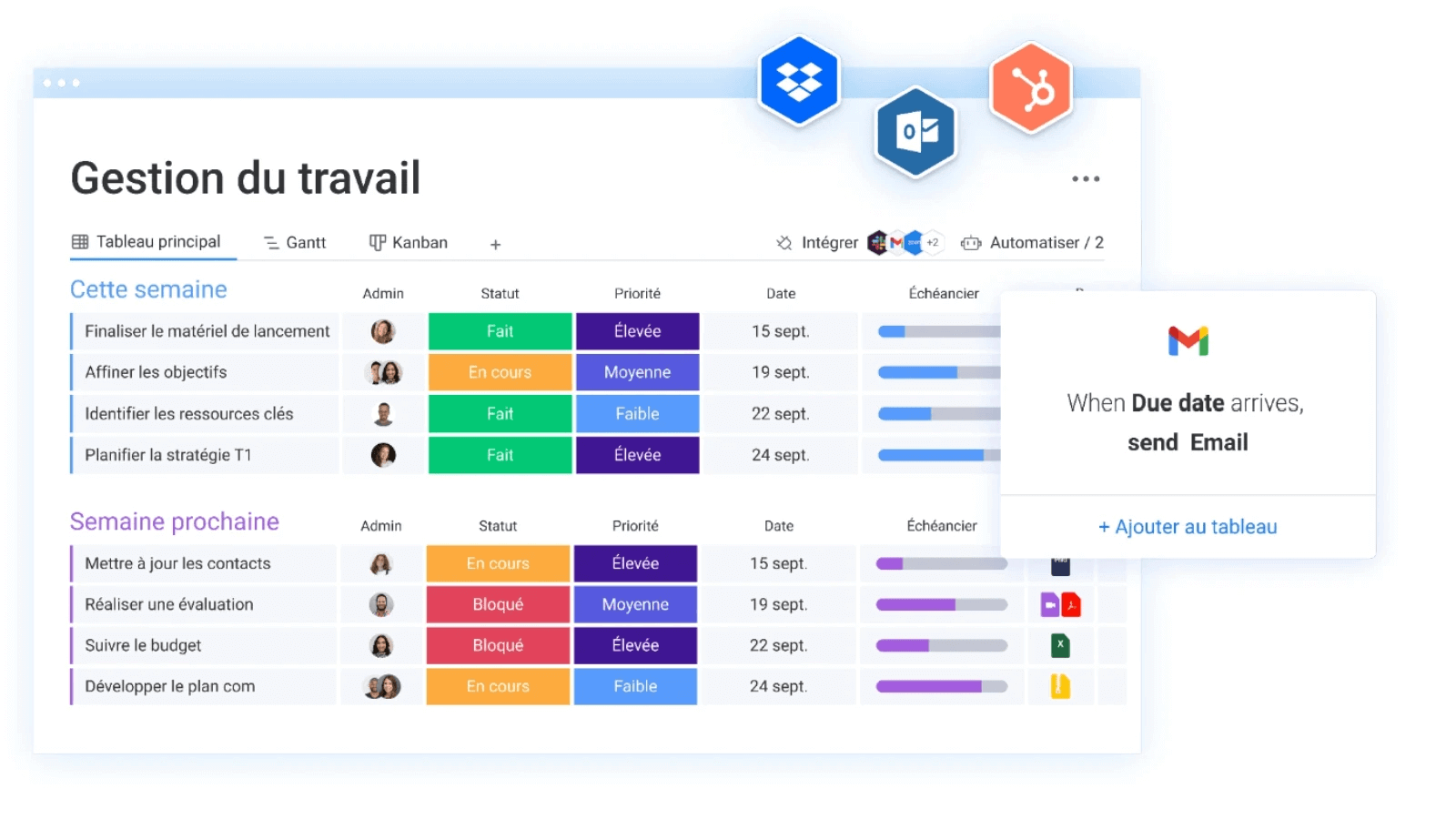
For example, you can bring together the support team that uses Zendesk and the development team that relies on Jira. By eliminating this compartmentalization, your developers can devote more time to the features and bugs that interest your customers most.
2. Real-time planning with a product roadmap model
monday.com also simplifies the creation and updating of a product roadmap simple and adaptable. With a well-designed product roadmap, you can ensure that every team and employee is moving in the right direction with the same information.

You can associate table items with sprint activity reports. The product roadmap will automatically provide information on project progress.
3. Shared access for external contributors
With monday.com, you can easily assign different levels of access to external stakeholders, a fundamental practice in agile methodology. For example, you can grant an important customer or project sponsor the ability to add and modify features. This facilitates collaboration on the backlog, as you can do this in virtual meetings rather than having to meet in person.
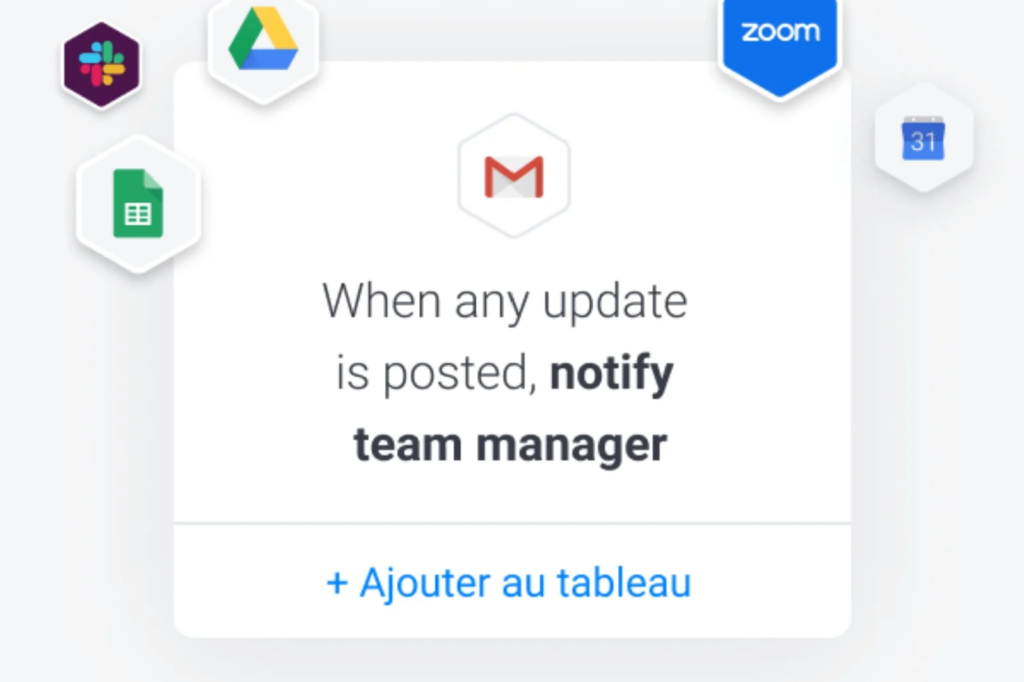
4. Customize templates to plan your iterations and sprints
Rather than cluttering up with chaotic whiteboards, clarify work assignments with a digital sprint board. Item statuses, priorities and assigned owner columns, colored for clarity, eliminate ambiguity. You can use and adjust our ready-to-use templates to meet your needs for sprint management with monday dev.
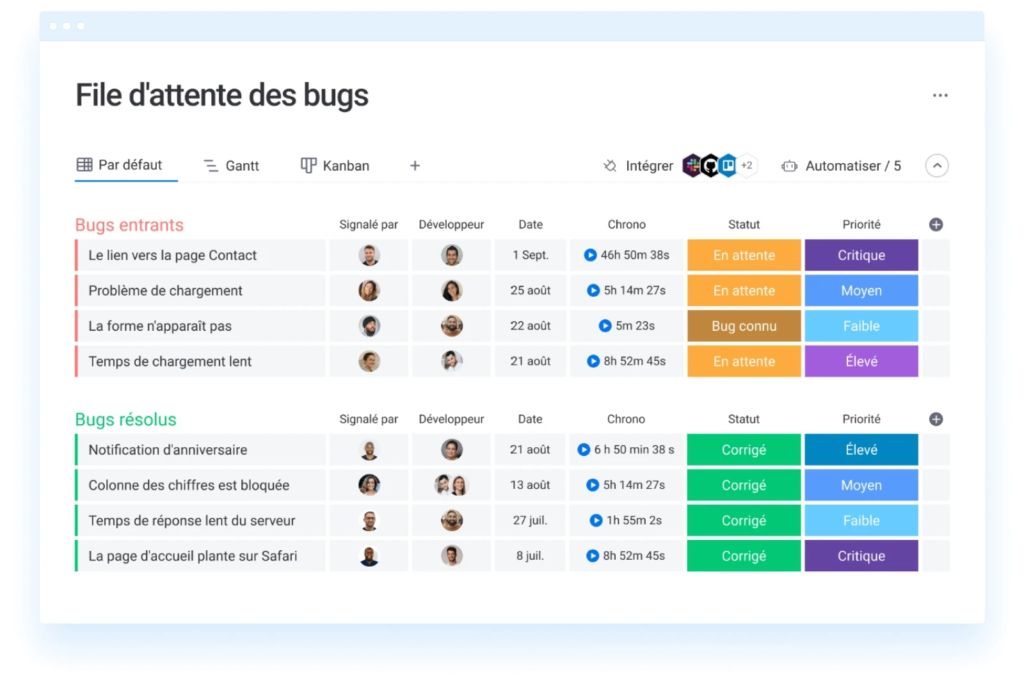
5. Synchronized dashboards for a real-time overview
Unify data from various sources to quickly create customized dashboards using our widgets and drag-and-drop editor. For example, agile teams can view budgets and project iterations on the same dashboard for greater visibility.
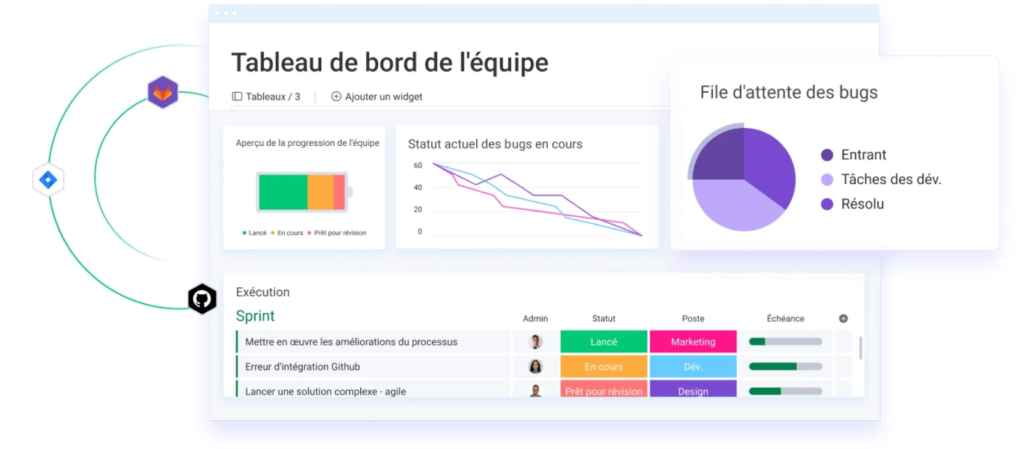
Do you think the agile approach would benefit you and your team?
You've probably given some thought to how an agile approach to project management could increase your team's transparency and efficiency. Here's how to make a smooth transition and ensure successful adoption, contact us to get started with monday.comand we'll help you integrate it optimally into your business.
Source: monday.com

